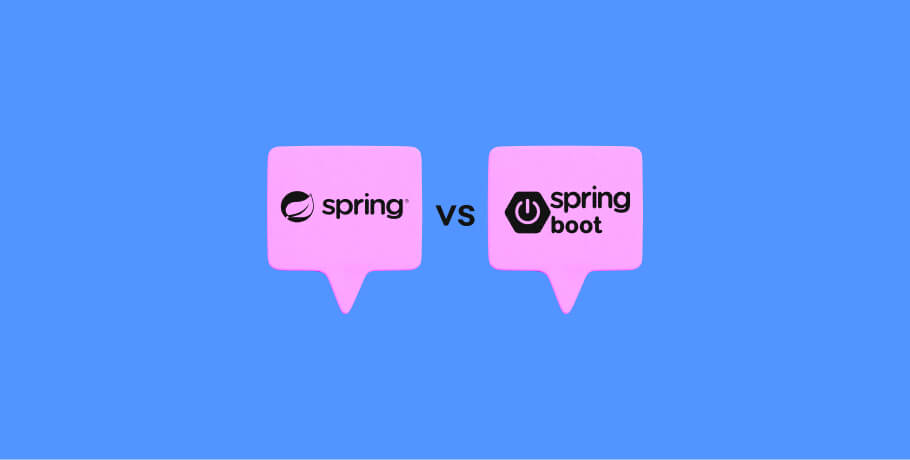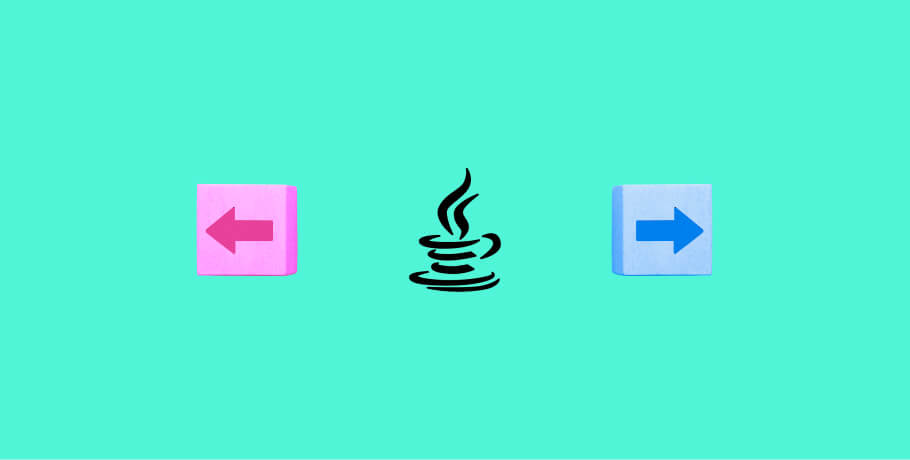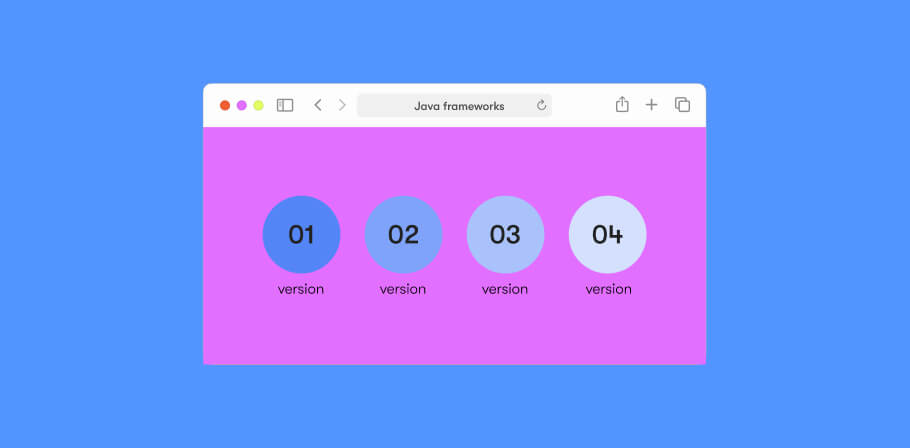Java is one of the world’s most popular programming languages, used by 30.55% of developers worldwide. It is no wonder that this technology has got so many frameworks and updates to work with as each software engineer attempts to make a contribution to the platform.
However, the variety of technologies makes it difficult to understand which one to choose. That’s why we have prepared a detailed overview of the differences between Struts and Spring framework. We’ll cover the features, architectures, and key peculiarities. Read on for more!
What is Spring?
Spring is an open-source Java framework. It introduces dependency injection (DI) and Inversion of Control (IoC), two concepts that are unavailable in the original specification. The technology is mostly used to simplify the development of web applications.
Spring Framework allows software engineers to create testable, portable, and modular applications. It is also worth noting that Spring has its own ecosystem consisting of solutions like Spring Boot, Spring Cloud, Spring Data, Spring Security, and many others.
Features
To compare Struts and Spring, we must first check out the latter’s key features:
- IoC Container. This framework’s core element provides a simplified way to configure and manage Java objects. It utilizes dependency injection to give the object reference during runtime. As a result, this reduced testing and maintenance costs.
- Data Access Framework. This feature lets developers use JDBC and Hibernate to store persistence data. It solves common issues like interaction with a database connection, dealing with exceptions, and utilizing transaction management.
- MVC Framework. Allows the usage of the Model-View-Controller architecture to develop web applications. It’s noteworthy that Spring supports the integration of view technologies like Jasper Report or FreeMarker to handle and validate forms. This speeds up the development process and simplifies planning and maintenance.
- TestContext Framework. This feature enables the possibility to apply unit and integration testing. One of the peculiarities of this component is that it also provides context management and caching DI of test fixtures, increasing the testability of your software. This results in you getting a bug-free application with maximum performance.
Although Spring Framework comes with many other features, we’ve covered the most important ones to demonstrate this solution’s peculiarities.
Pros
Some of Spring’s leading advantages include:
- Lightweight. The framework utilizes Plain Old Java Objects (POJO) to develop enterprise-level software using servlet containers instead of full-fledged application servers. It speeds up development and reduces costs.
- Configuration consistency. Java developers can use either XML or Java-based annotations as they wish. This helps them keep the software consistent, avoiding a total mess. As a result, you get clean code that’s easily reused in your project.
- Server requirements. The framework doesn’t need either a web or an application server. All components are managed using dependency injection, removing extra costs.
- Reusability. Many solutions like JDK timers or lagging frameworks are already implemented in Spring’s system. This means that engineers won’t have to waste their time creating new code, reducing expenses and speeding up development.
- Modules provided. The framework supports multiple classes and packages, providing developers with the freedom to choose whether they need them or not. This allows experienced software engineers to bring powerful solutions to your software.
Cons
Some of Spring’s most daunting disadvantages include:
- Difficulty. The framework is not easy to learn for new developers. As it provides a relatively unique programming approach, it is recommended only for experienced software engineers.
- Security. Unfortunately, Spring’s documentation doesn’t provide enough data on how to deal with cross-site scripting (XSS). This means that security is completely in the hands of the developer.
- Complexity. The huge amount of modules, classes, and variables make it nearly impossible for junior specialists to cope with the technology. You need an experienced team for success.
- Parallel mechanisms. The Spring ecosystem involves dozens of other solutions, and it’s up to the developer to choose the required ones. Once again, the issue is in the necessary background.
- XML knowledge. Spring utilizes quite a lot of XML, meaning that developers must be ready to spend some of their time using this language.
An experienced developer with a rich background in working with Spring can smooth these disadvantages, helping you avoid most pitfalls. It’s mostly a matter of expertise and watchfulness.
Companies using Spring framework
According to Stackshare, over 500 companies have reported using Spring Framework in their projects. These include many names like TransferWise, Blablacar, Indeed, and others. Simultaneously, almost 3,000 developers said they used the technology.
What is Struts?
Apache Struts is an open-source Java framework. It follows the MVC architectural pattern and provides pre-built classes for developers to use or customize depending on their projects. The technology is mostly used to develop web applications.
The Struts framework simplifies the development process and maintenance of web applications by providing pre-defined functionality. It is also known for facilitating the extension, debugging, and understanding of code.
Features
Let’s check out this technology’s features to learn the difference between Struts and Spring MVC framework:
- POJO forms and actions. The framework supports the usage of any Plain Old Java Object to receive form inputs or monitor the action class. This increases the readability and reusability of your code, reducing maintenance and update costs.
- Tag support. Struts uses a tag library to develop different types of functionality like data entry, URLs, property statements, and others. Basic knowledge of XML, HTML, and CSS is enough. This means that developers don’t have to waste time learning new concepts.
- Seamless integration. The framework can be integrated with other technologies like Spring or SiteMesh, helping developers leverage maximum benefits from all these features. It is much cheaper than creating custom integration solutions.
- View technologies. Struts supports multiple view options like Velocity, JSP, Freemarker, and many others. This helps you get a good-looking application.
There are also many other features like template support, plugin support, and profiling. We’ve listed the main options to provide a comprehensive overview.
Pros
Some of the advantages of using Struts include:
- Supported integrations. Developers can easily plug in any other frameworks and technologies to get even more features in their software.
- Annotations. The framework supports annotations that reduce code complexity and provides configuration files for better simplicity.
- High testability. Struts doesn’t require complex structures like the HttpServletResponse or HttpServletRequest, simplifying unit tests and reducing their costs.
- OGNL usage. The framework uses OGNL to get data from ValueStack and reduce code using conversion.
- Simplified ActionForms. Struts utilizes POJOs that do not require any class extension or interface implementation. This reduces the development time.
Cons
Some of the disadvantages of using Struts include:
- Difficulty. Just like with the Spring framework, Struts requires a deep understanding of Java pros and cons and a rich background to use it successfully.
- Reduced transparency. Many processes are going on in the background, making it more difficult to comprehend how this framework works.
- Single servlet. The framework supports only one ActionServlet, affecting scalability unless the developer finds an alternative approach to this issue.
Companies using Struts framework
Various sources state that over 2,000 companies use Struts in their web development projects. Some companies include Red Hat, Therap Services, Aspen, and others.
Architecture comparison of Spring framework vs Struts
Proceeding with our Java Spring vs Struts comparison, let’s check out the architectural approaches used in both frameworks. This determines where the solutions can be applied and whether they are a reliable option in each case.
Spring
Spring follows a layered architectural pattern consisting of about 20 modules. These are grouped into the Core Container, Data Access, Web, AOP, Instrumentation, and Test. Such an approach makes the framework a decent choice for applets and enterprise-class solutions.
Struts
Struts uses the Model-View-Controller (MVC) architecture that helps developers separate app data, business logic, and visual representation. This also means that the application code is more reusable and expressive.
The MVC pattern consists of three elements:
- Model — this is where the business logic is implemented.
- View — a presentation layer that’s responsible for the UI/UX.
- Controller — includes session handling, action logic, and security controls.
Each element is combined to provide a fast request-response flow that builds up a top-tier user experience. Implementing additional features to the application also becomes easier due to the separate logical distribution of the code.
5 differences between Java Spring and Struts
The Struts and Spring difference is quite noticeable when you compare both frameworks head-to-head. While they may be similar in many notions as most popular technologies are, here are the key differences that you must remember:
- Peculiarities: Struts extends servlet APIs, while Spring integrates DI and IOC.
- Architecture: Struts doesn’t follow the layered architectural pattern, while Spring does.
- Framework: Struts is heavyweight because of its tight coupling, while Spring is lightweight.
- Integration: Struts requires manual coding, while Spring supports ORM and JDBC technologies.
- Flexibility: Struts is less flexible when compared to Spring with its modules and other products.
These notions set the use cases for both frameworks. We shall cover them in the next blocks of this article.
Comparative table of Java Struts and Spring
Although there are many elements to cover in this Apache Struts vs Spring comparison, our team prepared all the core differences in a single sheet. This data will help you understand the frameworks better.
The basis of comparison | Struts | Spring |
Definition | An open-source Java framework used to extend servlet APIs and the MVC framework. | An open-source Java framework used to integrate IOC and DI. |
Weight | Heavyweight. | Lightweight. |
Tag support | Support all kinds of tags. | Doesn’t support tags. |
Coupling | Tightly coupled modules. | Loosely coupled modules. |
Architecture | Model-View-Controller model. | Layered based on modules. |
Flexibility | Less flexible than Spring. | Very flexible. |
When to choose Struts
The Struts framework is best used to develop web applications based on servlets and JSP. It is extremely effective when working with the J2EE specification because the framework utilizes the design patterns and follows the MVC architecture.
Therefore, if you work with the Java EE (also known as Jakarta EE) specification, choosing Struts is more effective due to the technology's similarities with the original. Some developers also recommend choosing Struts when working with legacy applications.
When to choose Spring
The Spring framework is used as a complementary tool for Java EE. It simplifies the development process by providing multiple templates, dependency injection, and Inversion of Control.
When deciding between Struts 2 vs Spring MVC, remember that the latter is best used for:
- Serverless applications;
- Microservices;
- Batch processing, and more.
This framework is used by technological giants like Netflix, demonstrating its reliability and high-level performance. Thus, if you plan on simplifying things, Spring is your choice.
Conclusion
Now that we’ve compared Java Struts vs Spring framework, we can see that both options are unique and come with different functionalities. While Spring uses dependency injection and inversion of control as its key features, Struts follows the MVC architectural pattern and provides developers with pre-built classes.
Spring is best used with microservices, serverless software, and batch processing. It is a huge ecosystem with multiple other modules developed on top of its framework. Struts, on the contrary, is recommended to be used along with the J2EE specification and legacy applications.
FAQ

The EPAM Anywhere Editorial Team is an international collective of senior software engineers, managers and communications professionals who create, review and share their insights on technology, career, remote work, and the daily life here at Anywhere.
The EPAM Anywhere Editorial Team is an international collective of senior software engineers, managers and communications professionals who create, review and share their insights on technology, career, remote work, and the daily life here at Anywhere.
Explore our Editorial Policy to learn more about our standards for content creation.
read more



















